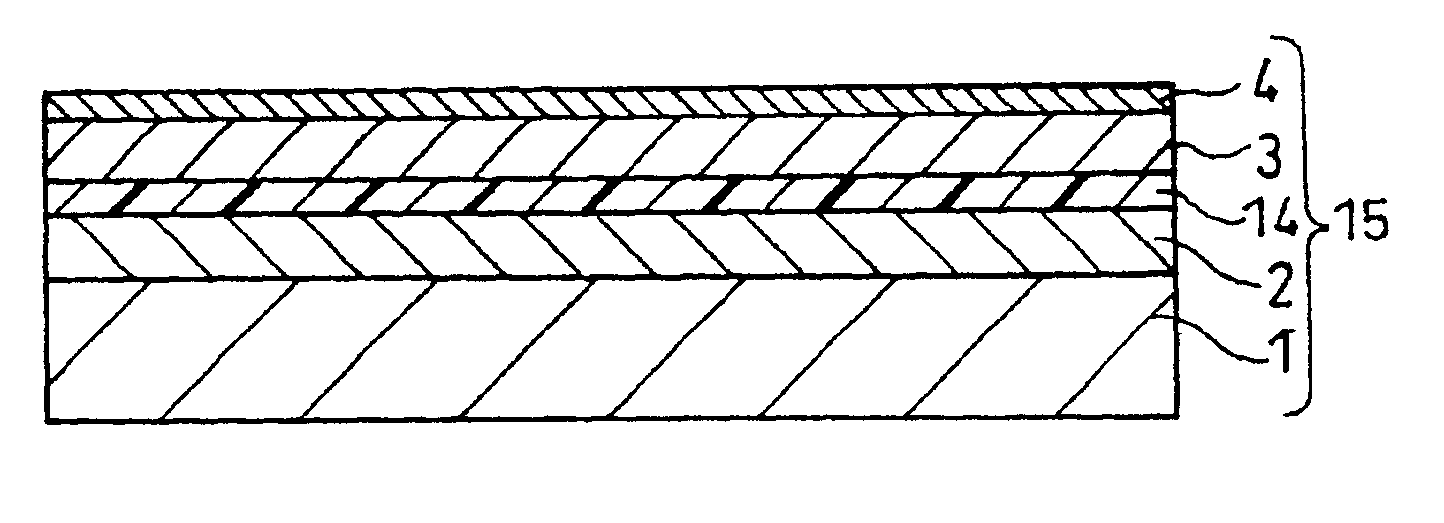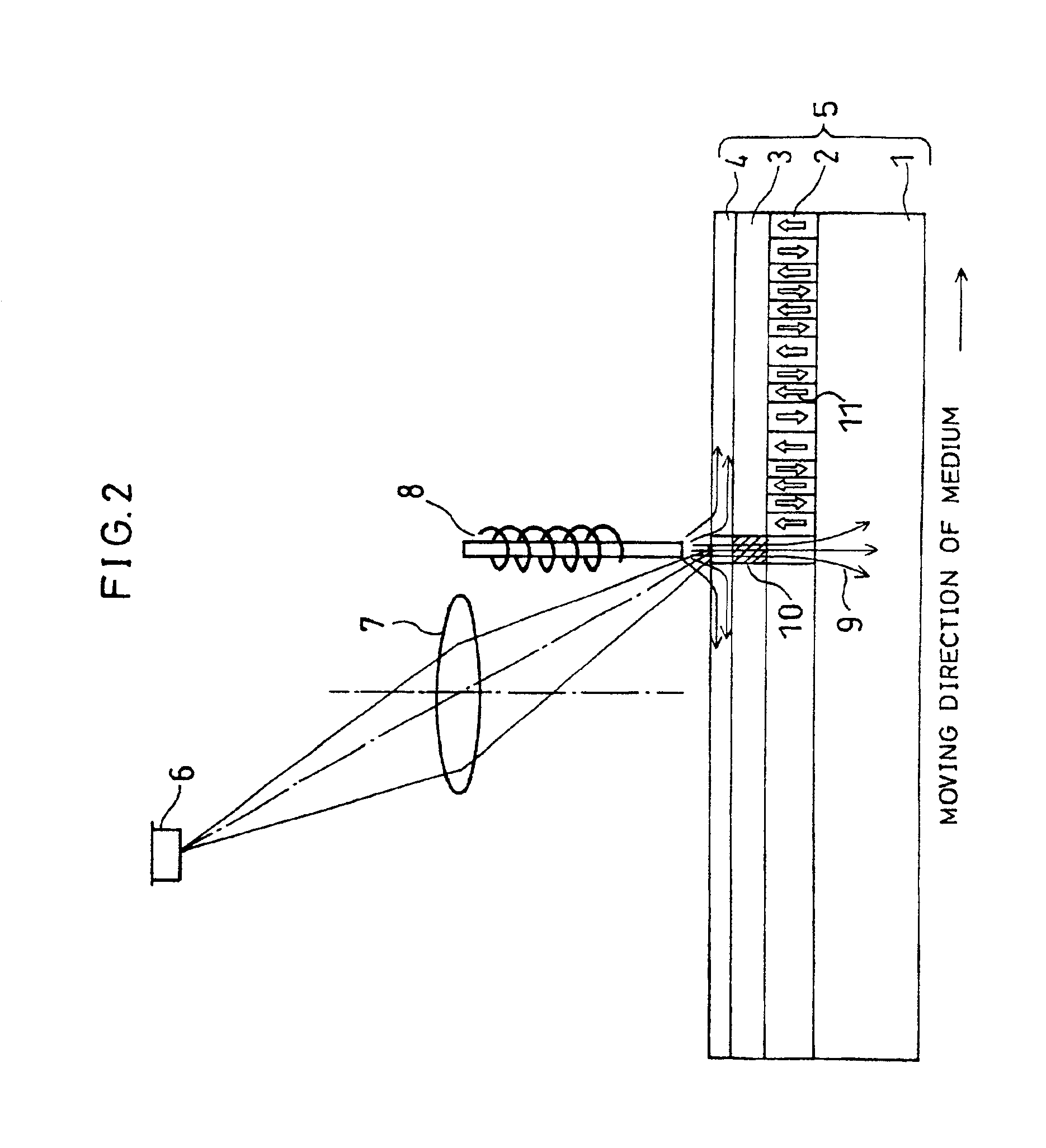Magnetic recording medium and method of recording
a technology of magnetic storage media and magnetic head, which is applied in the field of magnetic storage media and methods of recording and reproduction, can solve the problems of interference, difficult control of adjacent recording bits, difficult to keep under control, etc., and achieve the effect of reducing heat transmission
- Summary
- Abstract
- Description
- Claims
- Application Information
AI Technical Summary
Benefits of technology
Problems solved by technology
Method used
Image
Examples
embodiment 1
[Embodiment 1]
[0032]Referring to FIG. 1 through FIG. 3, the following description will discuss an embodiment in accordance with the present invention.
[0033]As shown in FIG. 1, a magnetic storage medium 5 of the present embodiment includes a magnetic recording film (magnetic recording layer) 2, a superconducting film (superconducting layer) 3, and a protection film 4 being deposited in this order on a base substrate 1. Normally, a lubricating film, for example, a perfluoropolyether film or a similar liquid fluorine compound film, (not shown) is formed on the protection film 4 to ensure lubrication between the magnetic storage medium 5 and later-mentioned magnetic heads 8 and 12.
[0034]The magnetic recording film 2 is constituted by a perpendicularly magnetized film which is suitable to perform high density recording because of its less diamagnetic field. The perpendicularly magnetized film may be composed a Co alloy. Specific examples include ferromagnetic materials such as CoCr, CoCr...
embodiment 2
[Embodiment 2]
[0054]Now, in reference FIG. 4, the following description will discuss another embodiment in accordance with the present invention.
[0055]FIG. 4 shows a cross-section of a magnetic storage medium 15 of the present embodiment. For convenience, members illustrated in FIG. 4 that have the same arrangement and function as members illustrated in any one of FIGS. 1 through 3, and that are mentioned in that Figure are indicated by the same reference numerals and description thereof is omitted.
[0056]As shown in FIG. 4, the magnetic storage medium 15 includes a magnetic recording film 2, a non-magnetic insulation film (thermal insulation layer, non-magnetic insulation layer) 14, a superconducting film 3, and a protection film 4, the films deposited on a base substrate 1 in this sequence.
[0057]The non-magnetic insulation film 14 may be, for example, a dielectric film composed of SiN, AlN, AlSiN, AlTaN, SiAlON, TiN, TiON, BN, ZnS, SiO2, TiO2, BaTiO3, or SrTiO3. A preferred thickne...
PUM
| Property | Measurement | Unit |
|---|---|---|
| diameter | aaaaa | aaaaa |
| thickness | aaaaa | aaaaa |
| superconducting | aaaaa | aaaaa |
Abstract
Description
Claims
Application Information
 Login to View More
Login to View More - R&D
- Intellectual Property
- Life Sciences
- Materials
- Tech Scout
- Unparalleled Data Quality
- Higher Quality Content
- 60% Fewer Hallucinations
Browse by: Latest US Patents, China's latest patents, Technical Efficacy Thesaurus, Application Domain, Technology Topic, Popular Technical Reports.
© 2025 PatSnap. All rights reserved.Legal|Privacy policy|Modern Slavery Act Transparency Statement|Sitemap|About US| Contact US: help@patsnap.com



